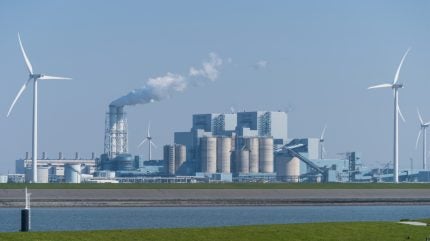
The Dutch Ministry of Climate and Green Growth has revised the country’s offshore wind energy capacity targets in a letter to the parliament, abandoning the goal of reaching 50GW by 2040 and casting doubt on the 70GW target for 2050.
The revision forms part of the North Sea Wind Energy Infrastructure Plan (WIN), which draws upon recent market analyses and sets out the framework for upcoming decisions regarding offshore infrastructure in the Dutch North Sea over the forthcoming years.

Discover B2B Marketing That Performs
Combine business intelligence and editorial excellence to reach engaged professionals across 36 leading media platforms.
This decision marks a significant reduction in the nation’s renewable energy ambitions, with potential repercussions for investment security, energy independence, and the fulfilment of national and European climate commitments.
NedZero, a key stakeholder in the Dutch energy sector, has expressed mixed reactions to the government’s decision.
While acknowledging the central role of offshore wind in the Dutch energy strategy, NedZero chairman Jan Vos conveyed disappointment in the slower-than-expected decarbonisation of industry, leading to reduced demand for sustainable energy.
Vos said: “While it makes sense to delay the scaling up of supply, this unfortunately puts the cart before the horse. We certainly won’t achieve our climate goals this way. In any case, we will continue developing offshore wind energy exactly as planned until 2032.

US Tariffs are shifting - will you react or anticipate?
Don’t let policy changes catch you off guard. Stay proactive with real-time data and expert analysis.
By GlobalData“After 2032, the government wants to develop 30GW-40GW, not 50GW. That remains a major challenge, and we as a sector will fully commit to it. The crucial thing now is to further develop the demand for sustainable energy; we must stop using oil and gas.”
The stability and predictability of government policy are critical for attracting private investments in offshore wind, stated NedZero.
The Netherlands’ leadership in offshore wind is vital for producing sustainable energy domestically and reducing import dependence, which is essential for an affordable and reliable energy transition and maintaining industry competitiveness.
The Climate and Energy Outlook (KEV) 2024 indicates that emission reductions by 2030 may fall short by one to five percentage points compared to previous projections, partly due to the offshore wind delays and stagnation in green hydrogen production.
NedZero anticipates that the KEV 2025 report may reveal further challenges in meeting emission reduction targets, risking non-compliance with the Climate Act’s legal obligations for a 95% emission reduction and a CO₂-neutral energy system by 2050.
The Netherlands’ revised targets also raise concerns about its credibility in European commitments.
The country is part of the North Seas Energy Cooperation, aiming for 193GW of joint offshore wind capacity by 2040 and 260GW by 2050, and has signed the Ostend Declaration targeting 300GW by 2050.





